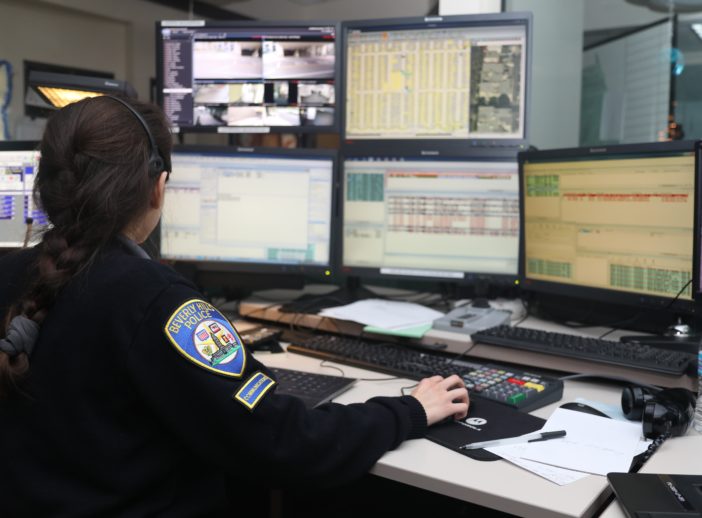A person calling 9-1-1 is arguably in the midst of the most desperate moments of their lives. What happens if a phone line is down, and that 9-1-1 call can’t go through?
More than 10 years ago, a backhoe disabled the 9-1-1 phone lines at a dispatch center in Washington County, Oregon. This devastating incident prompted Los Angeles County dispatch managers to come up with a contingency plan should an outage happen locally. Coinciding with the rise in cell phone use and advances in wireless technology, this discussion evolved into a conversation about the future of emergency services.
The answer to how to keep people safe in the event of a large disaster, to those thinking hard about it, was obvious: 9-1-1 had to become internet (IP) based. Finding a reliable, secure and workable IP solution for 9-1-1 proved exceedingly difficult, however.
That is why, after more than a decade of intense work, it was particularly gratifying for Beverly Hills PD to announce recently that it has gone live with the state’s first Regional Interagency Next Generation 9-1-1 (RING 9-1-1) system.
“Eight regional law enforcement agencies met to talk about what we are going to do if the big earthquake hits and our phone lines are down. We talked about the need to have a contingency plan,” said Dona Norris, Communications Bureau Manager for the Beverly Hills PD. “We ended up being the first turn-key network-based solution implemented in the state of California.”
The first part of the solution improved 9-1-1 call delivery speed and network back-up, and it created interoperability, which allows agencies to continue their operations even during a power failure by working off-site or transferring to a neighboring system. This means that if a Beverly Hills 9-1-1 operator lives in Pasadena and can’t get through the rubble to come to work, they can log in to Beverly Hills PD’s system at Pasadena’s headquarters.
“It presented us with capabilities that no one had ever seen before,” Norris said.
The most recent leg of the project concluded with the launch of a new IP-based communications system, designed by AT&T and West Safety Solutions. The system replaced an outdated traditional phone line technology with a new IP-based system. When the state is ready to give the go ahead, Beverly Hills is already equipped to receive text, pictures, video, and or data, through the 9-1-1 network.
Currently, the ability to text 9-1-1 is accomplished through a web-based browser; it is a best-effort service with limitations. However, Norris said that it has already saved lives in other regions when deaf people or those who were unable to speak could text 9-1-1 operators during an emergency.
“I’m proud of this project,” Norris said. “We all stuck it out and hung in there through times when the state was ready to give up. It’s pretty satisfying.”
The RING 9-1-1 project partnership includes eight public safety agencies: Beverly Hills Police Department, Pasadena Police Department, Alhambra Police Department, Glendale Police Department, Burbank Police Department, Sierra Madre Police Department, San Fernando Police Department, and Verdugo Fire Department.
RING 9-1-1 was designed through a cooperative effort between the California Governor’s Office of Emergency Services, Public Safety Communications Branch, the preceding eight local agencies, AT&T and West Safety Solutions.
For more information visit https://www.caloes.ca.gov/cal-oes-divis ions/public-safety-communications/ca-9-1-1-emergency-communications-branch
 Behind the Badge
Behind the Badge



